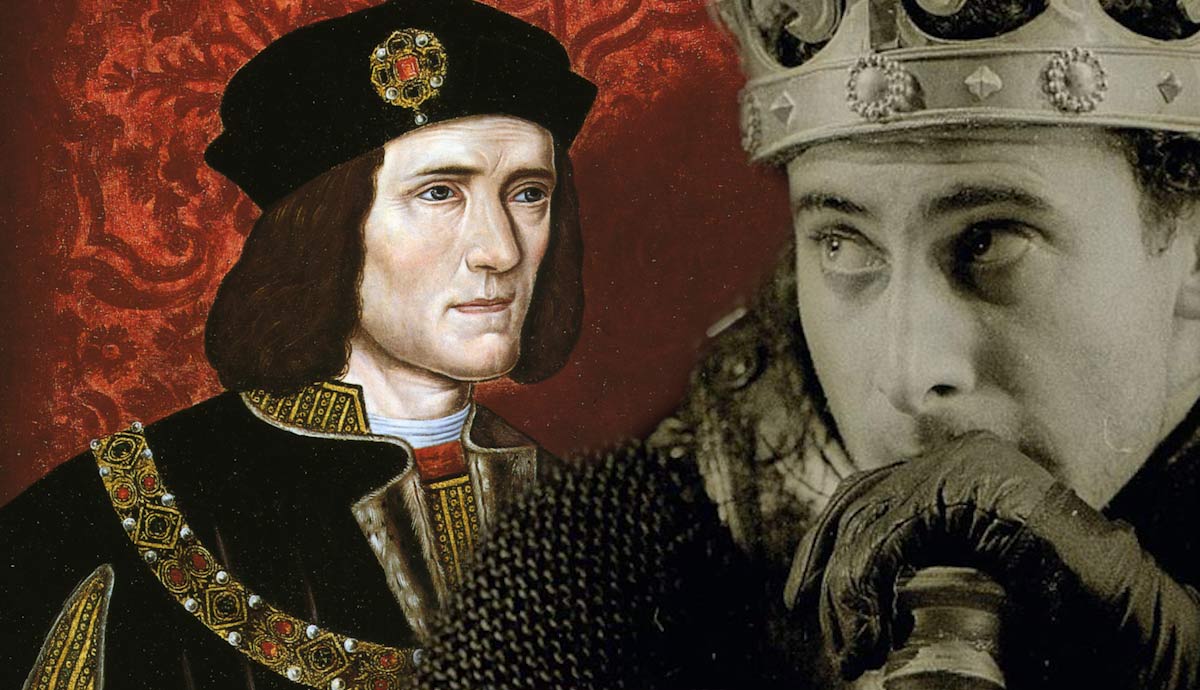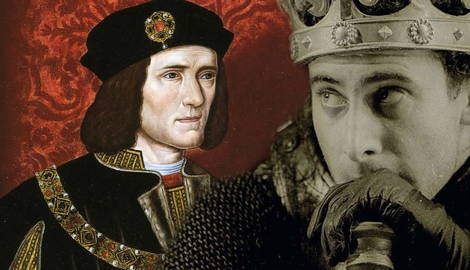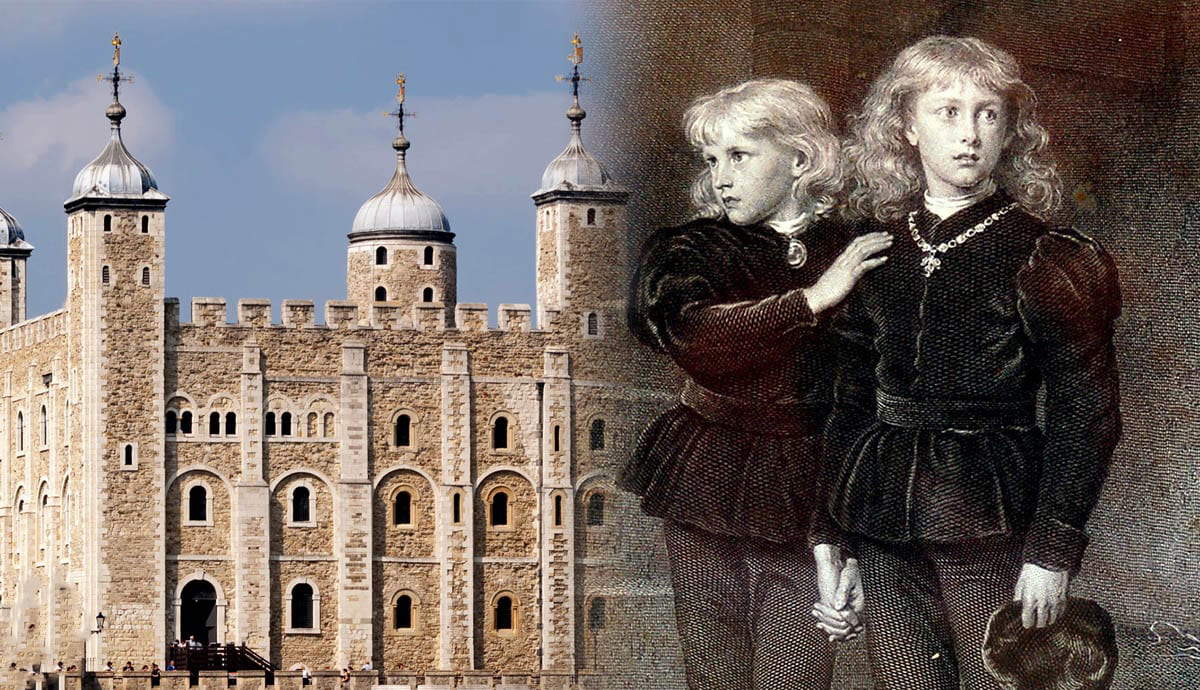
Richard III is not only the title of one of Shakespeare’s famous historical plays but also the name of its protagonist and villain. The plot follows the hunchback Richard III in his quest to rise to the throne. Throughout the play, Richard shares his darkest feelings and ruthless plans with the audience, turning them into witnesses and co-conspirators. In this article, we will introduce you to the background, plot, and themes in William Shakespeare’s gripping study of power and manipulation.
Introducing Richard III: William Shakespeare’s Darkest Villain

Richard III was a real historical figure born in 1452. He was crowned king in 1483, but his reign lasted little more than two years. After several uprisings and face-offs with opposing factions, he died in battle.
There are multiple controversies surrounding his life. While some contemporaries painted Richard III as a good-hearted man, others accused him of murdering his own wife, as well as various members of the nobility who stood in his way. Some sources say that he even killed Prince Edward V and his brother Richard, the Duke of York, when they were kids.
While Richard’s wife Anne really did die under strange circumstances, and the two Princes did disappear without a trace, it is impossible to tell whether Richard was truly responsible for their deaths. However, we do know that the monarchs who ruled England at the time of Shakespeare’s life had an interest in having Richard III portrayed as a ruthless and evil man. After all, Richard’s defeat in the battle of 1485 marked the beginning of the reign of the Tudor dynasty, which continued to rule England for the 118 years that followed. While it is clear that Shakespeare took a lot of dramatic liberties in his retelling of the story, Richard III provides us with a masterful study of human intrigue that can be applied to various modern contexts.
The Scene is Set

At the beginning of the play, a hunch-backed Richard of Gloucester tells the audience that he intends to become the king of England. Edward IV, the current king, has fallen ill and will probably not live much longer. However, there are a few people whose claims to the throne are much more legitimate than Richard’s.
Richard starts his climb to the throne by having Henry VI, who was deposed by Edward IV in 1461, murdered. He also murders Henry VI’s son in the hopes of marrying his widow. While he is at it, he also arranges for the murder of Clarence, his own older brother, who has recently been imprisoned by Edward IV on the charge of treason. But all of this is just a preparation for a particularly shameless move that happens when Richard III goes on to interrupt the funeral procession of Henry VI with the goal of wooing Henry VI’s daughter-in-law Lady Anne.
Richard III Convinces Lady Anne to Marry Him

In the second scene, we find Lady Anne grief-stricken over the recent deaths of her husband and father-in-law. But Richard does not let this stop him from interrupting the funeral. At first, Anne is furious. Richard then tells Anne that he only killed the two men because he is passionately in love with her. Therefore, any hate she feels towards him should in fact be directed towards herself. While Anne does put up a fight, she finds it difficult to resist the slick tongue of the hunch-backed Richard. By the end of the scene, Anne has agreed to marry the murderer of her husband and father-in-law.
Richard III Becomes King

Soon after, the ailing King Edward IV dies and Richard quickly starts making his moves. He imprisons the family of the King’s widow, Queen Elizabeth, causing the latter to flee. Richard then has the two young Princes, who would be next in line for the throne, sent to the Tower of London. Soon after, he has the Queen’s family executed and the two Princes murdered. He also arranges for the execution of anyone else who opposes his claim to the throne.
In a public display, Richard III refuses the crown when it is offered to him. But all this is nothing more than an act. He then pretends to succumb to the entreaties of his ally Buckingham and the mayor. Soon after, Richard III is crowned king and his goal has been achieved.
Richard III Has His Wife Killed

Once Richard has achieved the title, he decides to get rid of his wife. In his view, Anne has served her purpose in getting him to where he is now. In order to secure the throne, he now plans to marry the daughter of the former king and queen.

Meanwhile, Richard’s ally Buckingham realizes that Richard cannot be trusted by anybody and decides to flee, gather an army, and confront Richard in battle. But his plan fails, and Buckingham is captured and executed. This does not solve all of Richard’s problems, however, led by Henry, the Earl of Richmond, the Tudor family starts setting up an army to confront the new king.
The Final Battle

On the night before the battle, both Richard and Richmond are visited by the ghosts of Richard’s victims. During the battle, Richard fights valiantly, but loses his horse, causing him to exclaim one of the play’s most famous lines: “A horse, a horse, my kingdom for a horse!”
In the end, Henry, the Earl of Richmond, kills Richard and is crowned King Henry VII, ringing in the reign of the Tudor family.
Richard III: A Clever Rewriting of History?

Richard III is only one of many Shakespeare plays that seek to retell the Wars of the Roses, which were eventually won by the Tudor family. While King Richard III touches on several universal themes, it also represents a clever rewriting of history. During Shakespeare’s time, England was ruled by the Tudors. It was in their interest to have Henry VII of Tudor portrayed as a good man who had defeated an evil king, and it seems that Shakespeare was happy to serve their political agenda. But we must not judge the playwright too harshly. Given the fact that Shakespeare lived during a time when any dissent was punished severely, writing a play that painted the Tudors in a negative light would have definitely ended his career and possibly his life.
The Character of Richard III

Richard III is one of Shakespeare’s most interesting villains. While incredibly ugly and uncaring, he still manages to climb his way up to the throne. While we may question the historical accuracy of the story, its power goes beyond the particularities of the potline. Up to this day, it reminds us how easy it is to get caught in the traps of a master manipulator. By turning the villain of the story into the protagonist, Shakespeare makes the audience complicit in his machinations. Richard III proves that Shakespeare was not only a talented wordsmith, but a master of psychology. The play is an equally enticing and appalling deep dive into the allure of evil.
Themes in Richard III

Shakespeare’s Richard III touches on several motifs and themes. Apart from bringing up the corruption, ruthlessness, and intrigue of the powerful, Richard III shows us how willingly and easily people of all ranks allow themselves to be manipulated. It is obvious from the start that Richard is up to no good. What makes Richard III so gripping is that its protagonist succeeds in manipulating himself to the throne, despite the fact that most other characters see right through him. It seems that Richard’s ruthlessness has a special allure that draws even those who hate him into his net. This is best exemplified in the case of Lady Anne, who goes from wishing for Richard’s death to agreeing to marry him in less than 10 minutes. It seems that the pull of evil is a force few can resist.
Another key theme in Richard III is the fleeting nature of power. We can be king or queen one day, and dead the next. The play also shows us that holding a powerful position does not mean that you cannot be manipulated or abused. Quite to the contrary, the more powerful you are, the more likely you are to become a ploy in somebody else’s machinations.
William Shakespeare’s Richard III Throughout the Years

Richard III is a cautionary tale that is often reinterpreted in order to comment on contemporary political events. One famous film adaptation starring Ian McKellen shows Shakespeare’s villain as a fascist leader. Stage adaptations have also referred to the war in the Middle East, Stalinist Russia, and various dictators around the world. Most recently, several critics have started drawing parallels between Richard III and Donald Trump. It remains to be seen, in what new ways future directors will interpret this timeless story. But if we look at the many power struggles that continue to shake up the world, we can be sure that the themes of this play will continue to be relevant for a long time to come.










